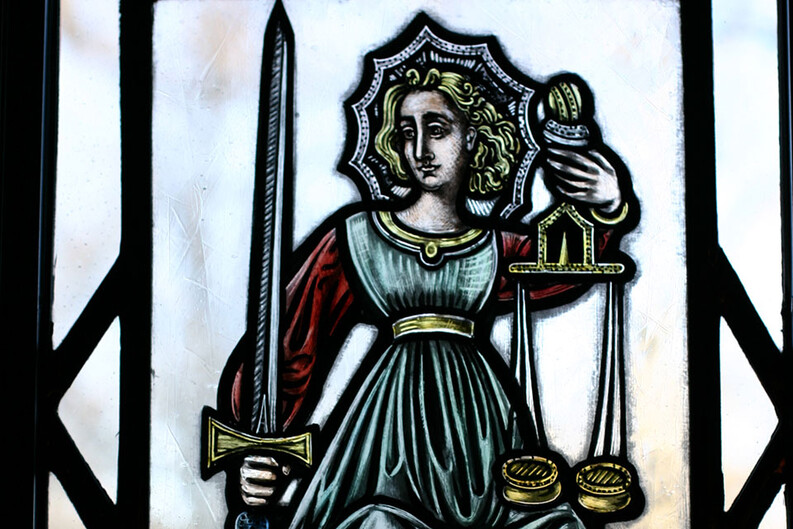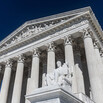Rule of Law Clinic Represents 27 Former Senior Government Officials in Amicus Brief

On April 8, 27 former national security, foreign policy, intelligence, and other public officials who have worked on security matters at the most senior levels of the United States government for both Democratic and Republican administrations filed an amicus brief4 supporting the plaintiffs in Perkins Coie LLP v. U.S. Department of Justice5. The case is before Judge Beryl Howell in the U.S. District Court for the District of Columbia.
Amici include former policymakers and lawyers from both major political parties whose governmental service spans seven decades: three federal judges, two United States senators, one secretary of defense; five U.S. ambassadors, including three to the United Nations; two national security advisors (or principal deputy); a deputy secretary of state and deputy attorney general; two White House counsels; four State Department legal advisers; three assistant attorneys general; three National Security Council legal advisers; directors of National Intelligence, the CIA, NSA, and FBI; and former general counsels of the Department of Homeland Security, the Office of Management and Budget, and the Department of Treasury.
Additional historical background on bills of attainder6
The officials are represented by the Peter Gruber Rule of Law Clinic8 at Yale Law School and by Susman Godfrey LLP9. Susman Godfrey was co-founded by Steve Susman YC ’62, a legendary trial lawyer and tireless champion of the rule of law. The brief was signed by 15 Susman Godfrey partners, several of whom are Yale or Yale Law School alumni, and is a testament to the firm’s continuing commitment to safeguarding the United States legal system, according to the firm.
The amicus brief supports the Perkins Coie law firm in challenging the constitutionality of President Trump’s March 6 executive order10, one of several orders sanctioning law firms and lawyers for their representation of the president’s former political opponents.
“[A]mici write to express their shared view that the president’s unprecedented executive orders against Perkins Coie and other law firms were ultra vires, because they were based on no valid national security concern, issued without any colorable legal authority, and unconstitutionally interfere with the separation of powers … In their decades of government service, amici have never before seen or condoned an ad hominem punitive, and retaliatory order of this kind, attacking and intimidating lawyers and a law firm on the basis of their lawful activities.”
The executive order under challenge, among other things, directed the suspension of attorney security clearances, denied firm employee access to federal buildings, and barred the firm from obtaining or maintaining federal government contracts. Five days after it was issued, attorneys representing Perkins Coie sued11 the Trump administration, seeking to enjoin the executive order and a judicial declaration that the order violates the separation of powers and the First, Fifth, and Sixth Amendments of the Constitution. Two additional law firms, WilmerHale and Jenner & Block — both similarly targeted by subsequent executive orders — have also filed challenges12 in federal court to the president’s subsequent orders.
Other amicus briefs filed in the Perkins Coie case on behalf of 363 law professors13, 504 law firms14, and former presidents of The District of Columbia Bar15, argue that the challenged order violates the First, Fifth, and Sixth Amendments to the Constitution. The former senior government officials argue in their amicus brief that irrespective of any constitutional rights that the order may violate, two structural reasons render it unlawful: because the historically unprecedented order exceeds any authority constitutionally entrusted to the president by Article 2 of the Constitution and any authority statutorily delegated by Congress under Article 1, and violates the separation of powers by claiming executive authority that infringes on the role of the judicial branch. In particular, amici argue that the president’s executive order constitutes a constitutionally forbidden bill of attainder — historically16 a legislative act requiring presidential signature declaring an individual or group of individuals as guilty.
“[I]f the President could not constitutionally issue a bill of attainder against Perkins Coie when acting together with Congress,” amici argue, “then surely he lacks the constitutional power to issue the same bill of attainder when acting alone.” The brief details historical research noting that for three centuries before the founding of the Constitution, even English kings never issued bill of attainders acting alone.
According to the brief, amici state that executive orders like the one being challenged would have been viewed as violations of their constitutional oath.
“Left undisturbed, this Order will jeopardize the executive’s ability to call on judicial deference in those cases where national security is genuinely implicated … Amici submit that there is no general national security power or statute that empowers the President to sanction U.S. citizens simply because they disagree with him. The national security policymakers among amici would never have recommended that such an Order be imposed. If asked, the national security lawyers among amici would have advised their clients that such unprecedented executive orders were illegal, because they were issued without colorable legal authority and in violation of the separation of powers. Nor do amici know of any Supreme Court decision or historical practice that authorizes the President to issue such punitive ad hominem presidential actions against American citizens against whom he seeks retribution.”
Former U.S. Circuit Judge and Assistant Attorney General of the Office of Legal Counsel of the Department of Justice Michael Luttig explained why he signed the brief.
“It is one of the proudest moments of my life to join the brilliant amicus brief of these exceptional public servants, co-authored by Professor Koh, his clinic, and the Susman Godfrey law firm. It is indisputably the single most powerful brief ever written, directly confronting and challenging a President of the United States. Only Professor Koh could have developed this powerful brief in defense of the Constitution, the rule of law, and the nation’s legal profession.”
Yale Law School graduates represented include former U.S. Sen. And U.N. Ambassador Jack Danforth ’63, former White House Counsel Gregory Craig ’72, former Office of Management and Budget General Counsel Alan Raul ’80, former National Security Council Legal Adviser Nicholas Rostow ’82, former Assistant Attorney General Peter Keisler ’85, and former Deputy Assistant Secretary of Defense Matt Waxman ’99.
Professor Koh and William O. Douglas Clinical Professor of Law Michael Wishnie ’93 founded the Peter Gruber Rule of Law Clinic at Yale Law School in 2016 to address rule of law challenges. It is now led by Koh, Visiting Lecturers in Law Eugene Fidell and Margaret Donovan and as of July 1, 2025, by Peter Gruber Distinguished Rule of Law Fellow Bruce C. Swartz ’79 and Peter Gruber Rule of Law Fellow Sonia Mittal ’13.
Law School clinic members who worked on the brief included Matthew Botvinick ’26, Emily Elledge ’26, Avi Gupta ’26, Fred Halbhuber ’25, Jake Mattis ’26, Inbar Pe’er ’25, Avi Siegal ’26, and Brady Worthington ’27.
“As students who will soon enter the legal profession, we are extremely concerned by the unprecedented and unconstitutional orders targeting lawyers and law firms disfavored by the President,” the students said. “We are grateful for the opportunity to play a part in protecting the rule of law.”
Professor Koh explained the historical significance of a Yale Law School clinic helping to write the brief.
“Every Yale student knows that before Whalley, Goffe, and Dixwell17 became the names of local streets, they were English judges who found a ‘New Haven’ in 1661, after fleeing here to escape retaliation by a vengeful king. It is unthinkable that the early Americans who followed them to frame our Constitution intended to grant the U.S. president a unilateral power to punish enemies that even English kings did not possess.”
An April 21 hearing has been set regarding plaintiffs’ motions for summary judgment and a permanent injunction.
For further information on the Yale Law School Peter Gruber Rule of Law Clinic8 and the case, please contact Brady Worthington.
For further information on the Susman Godfrey9 law firm, please contact Jacob Buchdahl.


